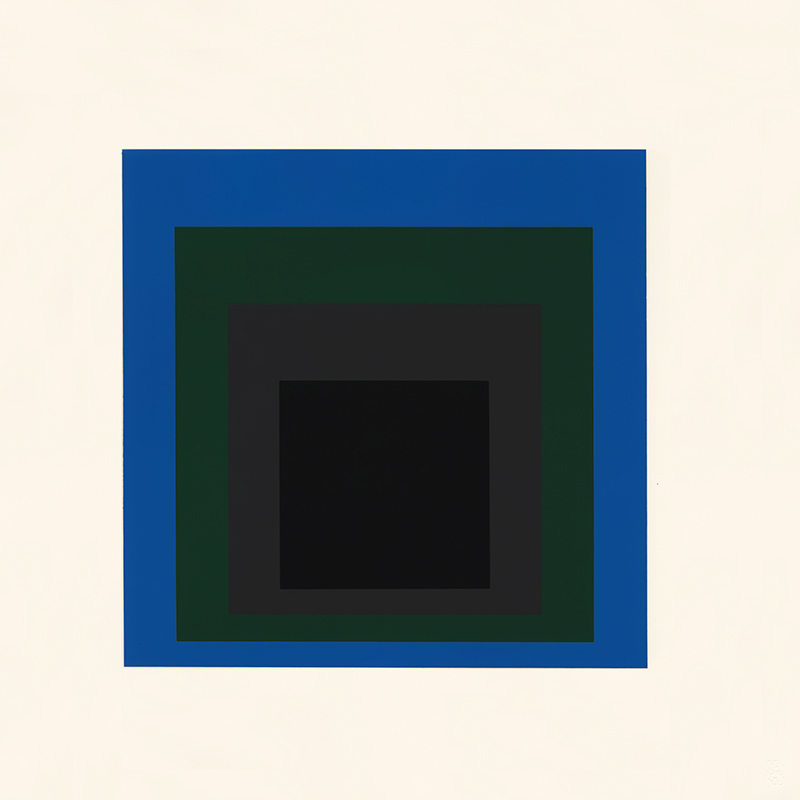
19th, 20th & 21st Century Fine Prints
707-546-7352 · fax 707-546-7924 · web: www.annexgalleries.com · email: artannex@aol.com
Porta Negra - Pl. 5 from 'Soft Edge - Hard Edge' (Homage to the Square series) by Josef Albers

Porta Negra - Pl. 5 from 'Soft Edge - Hard Edge' (Homage to the Square series)
Josef Albers
Porta Negra - Pl. 5 from 'Soft Edge - Hard Edge' (Homage to the Square series)
Josef Albers
1888 - 1976 (biography)Josef Albers used the square as the subject of color studies for twenty-five years, creating over 1,000 paintings relating to the shape in schemes of three to four colors. Drawn to the orderliness of geometry, Albers had regularly used graph paper to plot out his artistic ideas; however, he also believed that total symmetry was lifeless, and that intentional asymmetry was a necessary component to a successful composition. In 1949, after formulating a variety of layouts that would best complement his color studies, he chose the descending nestled squares - symmetrical on the horizontal axis but asymmetrical on the vertical - as the ideal way to communicate his theory.
Once he had settled on a composition, he turned his attention to color schemes. From the Whitney Museum: These strictly ordered compositions were merely means to an end. He explained: "The scheme of the Homages has no real esthetic consequences by itself. There were hundreds of possibilities, but since my main problem is color. . .let’s have a scheme, a cooking pot that cooks for four people, and no more. Therefore, let the colors react in the prison in which I put them."
"Soft Edge - Hard Edge" was a suite of 10 silkscreens done after some of the artist's own paintings, printed at Sirocco Screenprints and published by Ives-Sillman, both in New Haven, CT, where Albers was living at the time.
Josef Albers was born in Westphalia, Germany, on March 19, 1888. His formal art training included the Weimar Bauhaus, where he became professor in 1925. When the Bauhaus closed under Nazi pressure in 1933, he immigrated to the United States and joined the faculty of Black Mountain College, North Carolina. There, he ran the painting program until 1949. His students included Robert Rauschenberg, Cy Twombly, Ray Johnson, and Susan Weil.
In 1950 he left Black Mountain College for Yale University to head the Department of Design. He taught there until his retirement in 1958. He continued to work, however, collaborating with architect King-lui Wi, writing poetry and the book Interaction of Color (1963), working on structural constellation pieces, and designing abstract album covers for Enoch Light’s Command LPs, among other projects. With his wife, textile artist Anni Albers, he would found the Josef and Anni Albers Foundation, a not-for-profit organization to “further the revelation and evocation of vision through art”. He would continue to work in New Haven until his death there on March 26, 1976.
